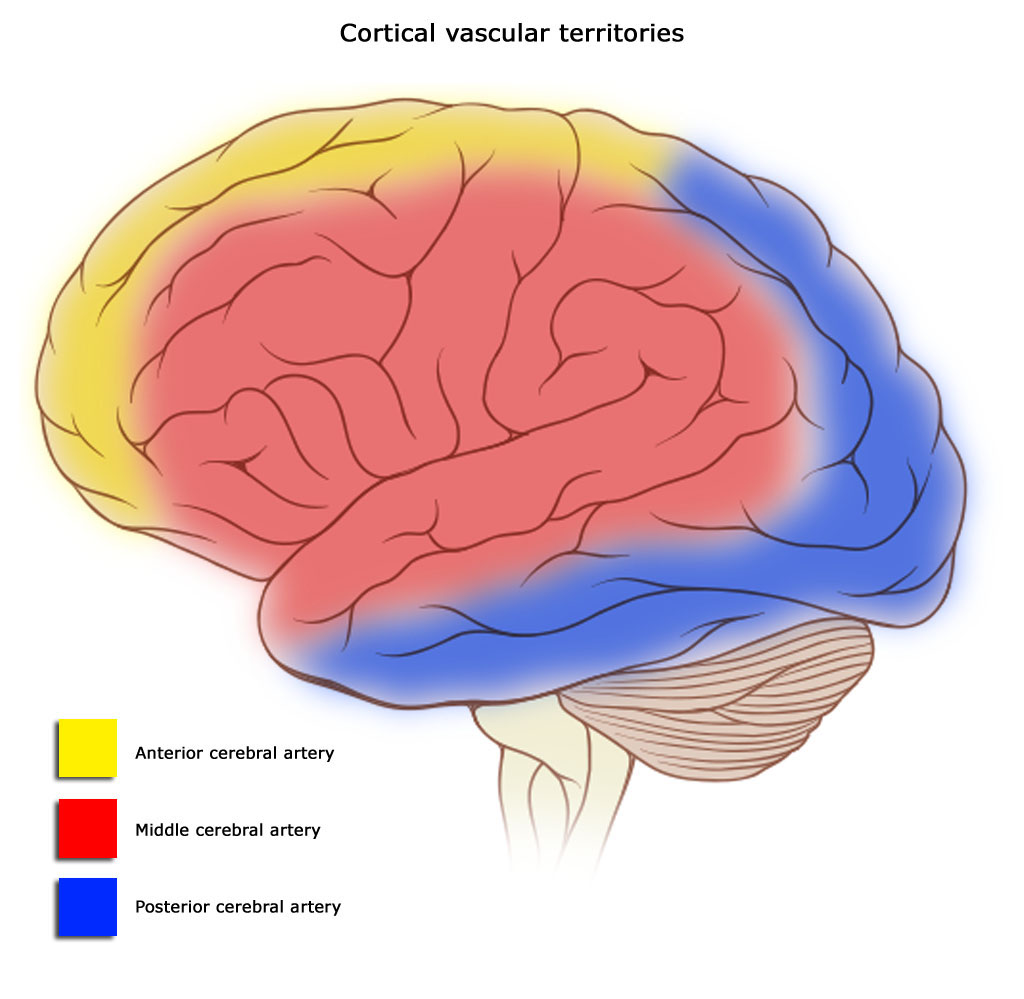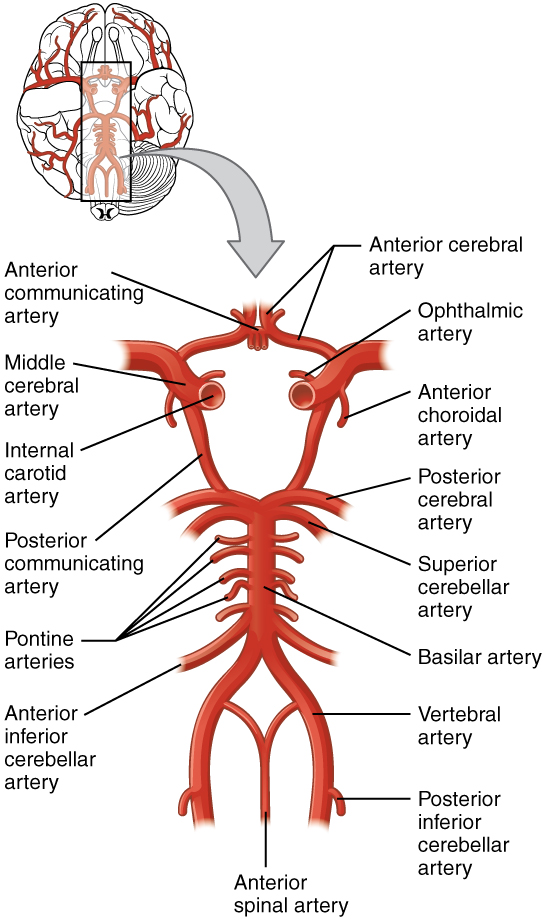Arterial Supply of the Brain and the Circle of Willis (Cerebral Arterial Circle)
Rachel Jessop and Jim Hutchins
Objective
1. Explain the vascular territories of the brain via the Circle of Willis.
2. Be able to practice integrating this information into case studies of vascular disorders.

The blood supply to the cortex comes from three major arteries:
- the anterior cerebral artery (ACA);
- the middle cerebral artery (MCA);
- the posterior cerebral artery (PCA).
Territories of these three major arteries are shown in the diagram.
All three of these arteries originate from an anastomosis (joining of blood vessels) at the base of the brain called the Circle of Willis. The Circle of Willis is fed by the anterior circulation, coming from the carotid arteries which rise through the ventral neck; and the posterior circulation, which runs through the vertebral arteries. The vertebral arteries anastomose at the medulla to form the basilar artery.
Branches of the basilar supply the brainstem. The basilar branches at the midbrain level form the posterior cerebral arteries.

The carotid arteries branch and turn sharply as they reach the base of the brain, forming the anterior and middle cerebral arteries.
All these arteries are connected by a single anterior communicating artery and a pair of posterior communicating arteries, completing the circle.
This information is essential to understand when it comes to assessing ischemia and thrombolytic damage. Practice answering the following ABRET-style questions:
- If a patient is suffering from diplopia, which artery is most likely to be damaged?
- An MRI reveals that a patient has ischemic damage on the left precentral gyrus. Which artery is responsible for perfusing this area, and what symptoms are likely in this case?
- A patient comes into the clinic complaining of loss of sensation in their right leg. Imaging could reveal a thrombus occluding what artery?

